第7章 THE COMMODITY(5)
For example,tailoring if one considers its physical aspect as a distinct productive activity produces a coat,but not the exchange-value of the coat.The exchange-value is produced by it not as tailoring as such but as abstract universal labour,and this belongs to a social framework not devised by the tailor.Women in ancient domestic industry,for instance,produced coats without producing the exchange-value of coats.Labour as source of material wealth was well known both to Moses,the law-giver,and to Adam Smith,the customs official.[8]
Let us now examine a few propositions which follow from the reduction of exchange-value to labour-time.
A commodity as a use-value has an eminently material function.Wheat for example is used as food.A machine replaces a certain amount of labour.
This function,by virtue of which a commodity is a use-value,an article of consumption,may be called its service,the service it renders as a use-value.But the commodity as an exchange-value is always considered solely from the standpoint of the result.What matters is not the service it renders,but the service [9]rendered to it in the course of its production.Thus the exchange-value of a machine,for instance,is determined not by the amount of labour-time which it can replace,but by the amount of labour-time expended in its production and therefore required for the production of a new machine of the same type.
Thus,if the amount of labour required for the production of commodities remained constant,their exchange-value would also remain unchanged.But the facility or difficulty of production varies continually.If the productivity of labour grows,the same use-value will be produced in less time.If~the productivity of labour declines,more time will be needed to produce the same use-value.The amount of labour-time contained in a commodity,and therefore its exchange-value,is consequently a variable quantity,rising or falling in inverse proportion to the rise or fall of the productivity of labour.The level of the productivity of labour,which is predetermined in manufacturing industry,depends in agriculture and extractive industry also upon unpredictable natural conditions.The same quantity of labour will result in a larger or smaller output of various metals --depending on the relative abundance of the deposits of these metals in the earth's crust.The same amount of labour may yield two bushels of wheat in a favourable season,and perhaps only one bushel in an unfavourable season.Scarcity or abundance brought about by natural circumstances seems in this case to determine the exchange-value of commodities,because it determines the productivity of the specific concrete labour which is bound up with the natural conditions.
Equal amounts of labour-time,or equal amounts of exchange-value,are contained in unequal volumes of different use-values.The smaller the volume of a use-value which contains a given amount of labour-time as compared with other use-values of commodities,the greater is the specific exchange-value of that commodity.If we find that in different epochs of civilisation separated by long periods of time,various use-values --for example gold,silver,copper and iron,or wheat,rye,barley and oats --form a series of specific exchange-values which on the whole retain their relative order in relation to one another,though not their exact numerical proportions,it follows that the progressive development of the social productive forces has exerted a uniform or nearly uniform effect on the labour-time required for the production of these commodities.
The exchange-value of a commodity is not expressed in its own use-value.
But as materialisation of universal social labour-time,the use-value of one commodity is brought into relation with the use-values of other commodities.
The exchange-value of one commodity thus manifests itself in the use-values of other commodities.In fact the exchange-value of one commodity expressed in the use-value of another commodity represents equivalence.If one says,for instance,one yard of linen is worth two pounds of coffee,then the exchange-value of linen is expressed in the use-value of coffee,and it is moreover expressed in a definite quantity of this use-value.Once the proportion is given,the value of any quantity of linen can be expressed in terms of coffee.It is evident that the exchange-value of a commodity,e.g.,linen,is not exhaustively expressed by the proportion in which a particular commodity,e.g.,coffee,forms its equivalent.The quantity of universal labour-time represented by a yard of linen exists simultaneously in infinitely varied amounts of the use-values of all other commodities.
The use-value of any other commodity taken in the proportion which represents the same quantity of labour-time constitutes an equivalent for the yard of linen.The exchange-value of this particular commodity can therefore be exhaustively exprcssed only by the infinite number of equations in which the use-values of all other commodities form its equivalent.The only exhaustive expression for a universal equivalent is the sum of these equations or the totality of the different proportions in which a commodity can be exchanged for any other commodity.For example the series of equations --1yard of linen =1/2lb.of tea 1yard of linen =2lbs.of coffee 1yard of linen =8lbs.of bread 1yard of linen =6yards of calico may be put in the following form --1yard of linen =t/8lb.of tea +1/2lb.of coffee 2lbs.Of bread +11/2yards of calico.